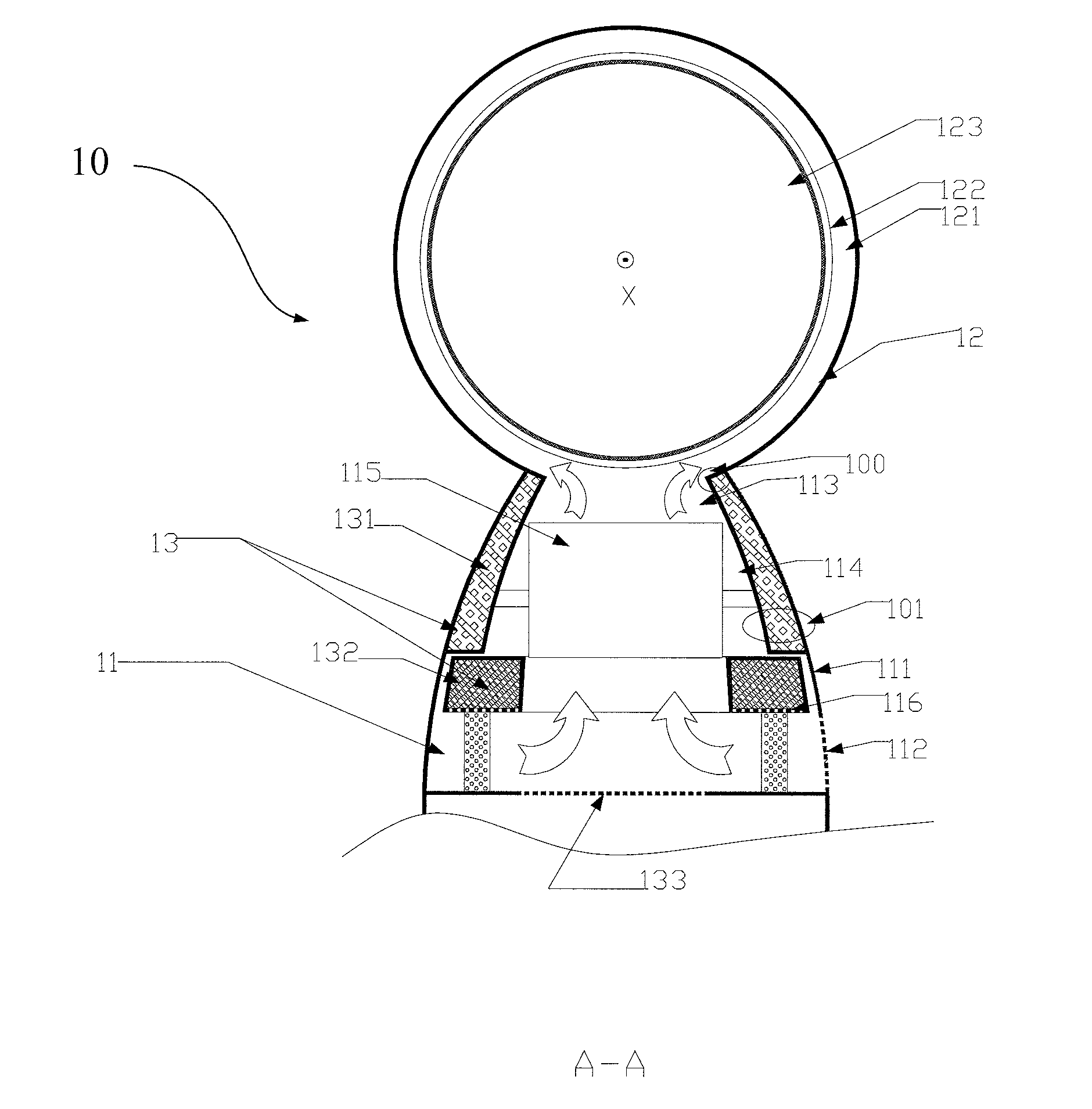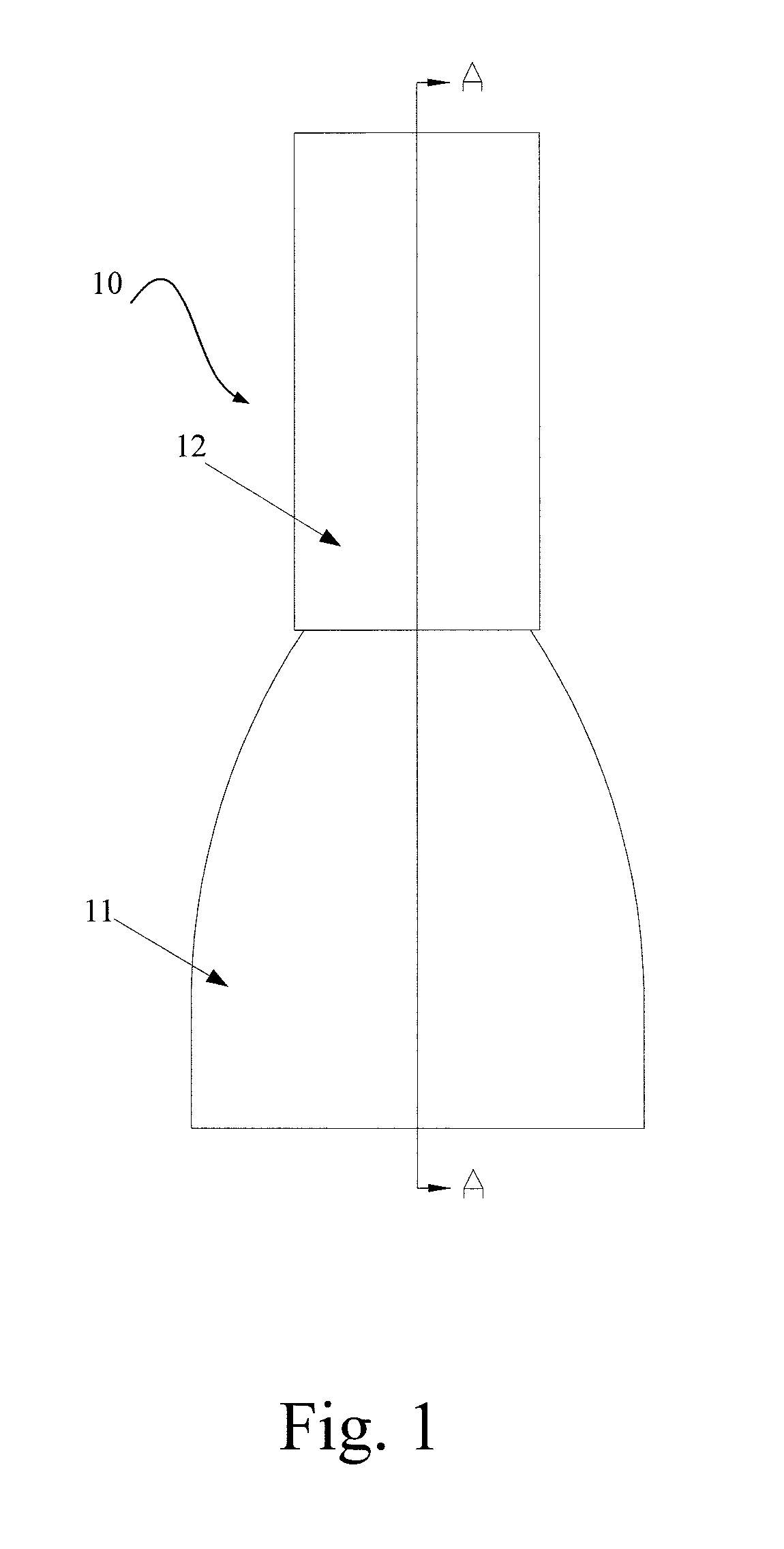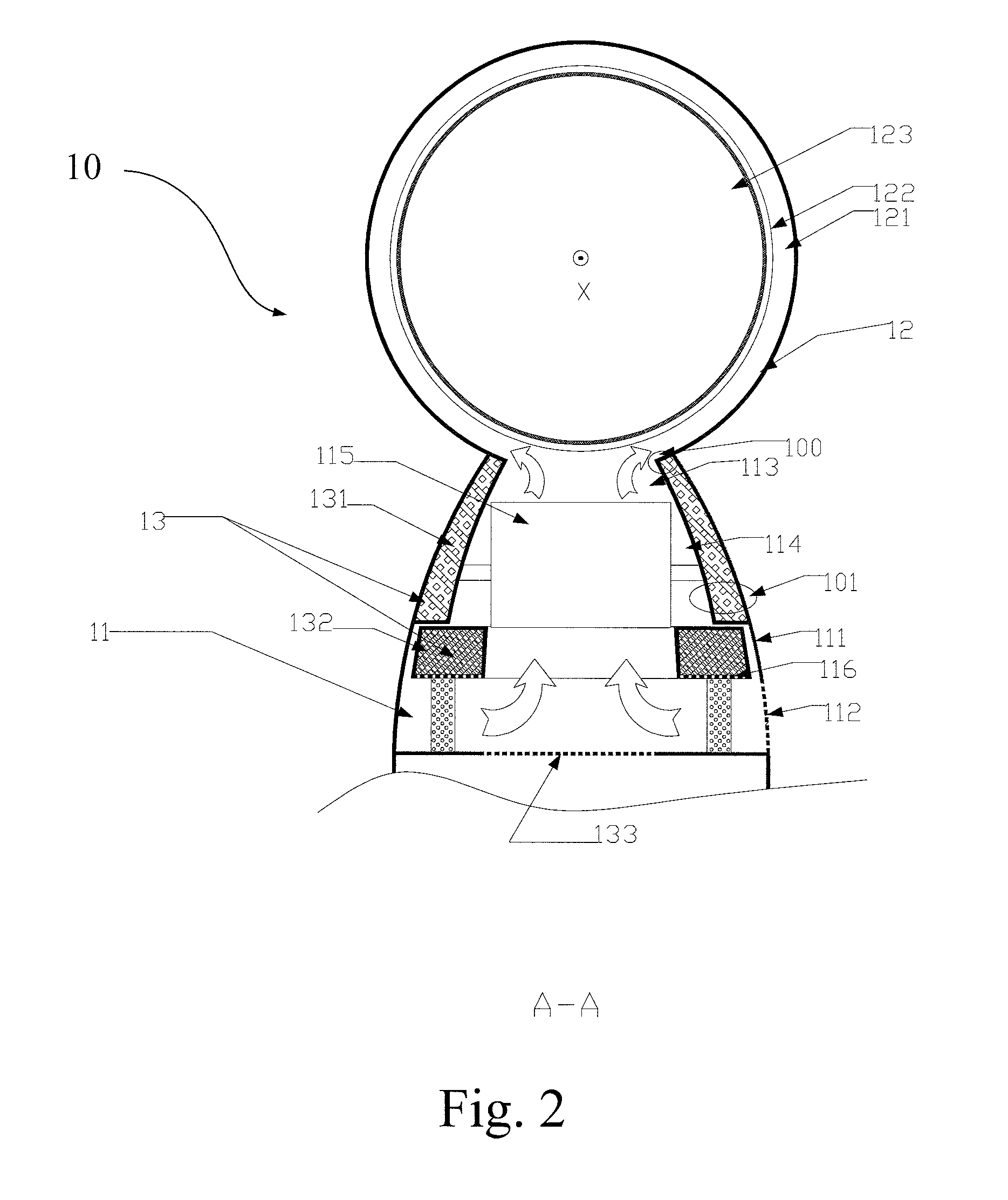Low-noise bladeless fan
a bladeless fan, low-noise technology, applied in the direction of machines/engines, mechanical equipment, liquid fuel engines, etc., can solve the problems of noise at the interface between the air, easy to damage the blades, and difficult to clean, so as to reduce the noise of the fan
- Summary
- Abstract
- Description
- Claims
- Application Information
AI Technical Summary
Benefits of technology
Problems solved by technology
Method used
Image
Examples
Embodiment Construction
[0023]FIG. 1 shows a side view of a low-noise bladeless fan 10 including a base 11 and a nozzle 12.
[0024]As shown in FIG. 2, the low-noise bladeless fan 10 comprises the nozzle 12 located at the top of the base 11, and noise-reduction components 13 located within the base 11.
[0025]As a major mounting assembly of the low-noise bladeless fan, the base 11 can have an arced shape, a cylindrical shape, a cuboid shape or other shapes.
[0026]The base 11 comprises an outer casing 111, air inlets 112, air outlets 113, air ducts 114 between the air inlets 112 and the air outlets 113, as well as an impeller 115 and an impeller fixture 116 accommodated in the outer casing 111.
[0027]The outer casing 111 is a casing body with an opening at one end thereof, the opening being in communication with the nozzle 12. The outer casing 111 has a shape designed based on actual design demand and not confined to the present embodiment.
[0028]The air inlets 112 are a plurality of through-holes disposed on a sid...
PUM
 Login to View More
Login to View More Abstract
Description
Claims
Application Information
 Login to View More
Login to View More - R&D
- Intellectual Property
- Life Sciences
- Materials
- Tech Scout
- Unparalleled Data Quality
- Higher Quality Content
- 60% Fewer Hallucinations
Browse by: Latest US Patents, China's latest patents, Technical Efficacy Thesaurus, Application Domain, Technology Topic, Popular Technical Reports.
© 2025 PatSnap. All rights reserved.Legal|Privacy policy|Modern Slavery Act Transparency Statement|Sitemap|About US| Contact US: help@patsnap.com



